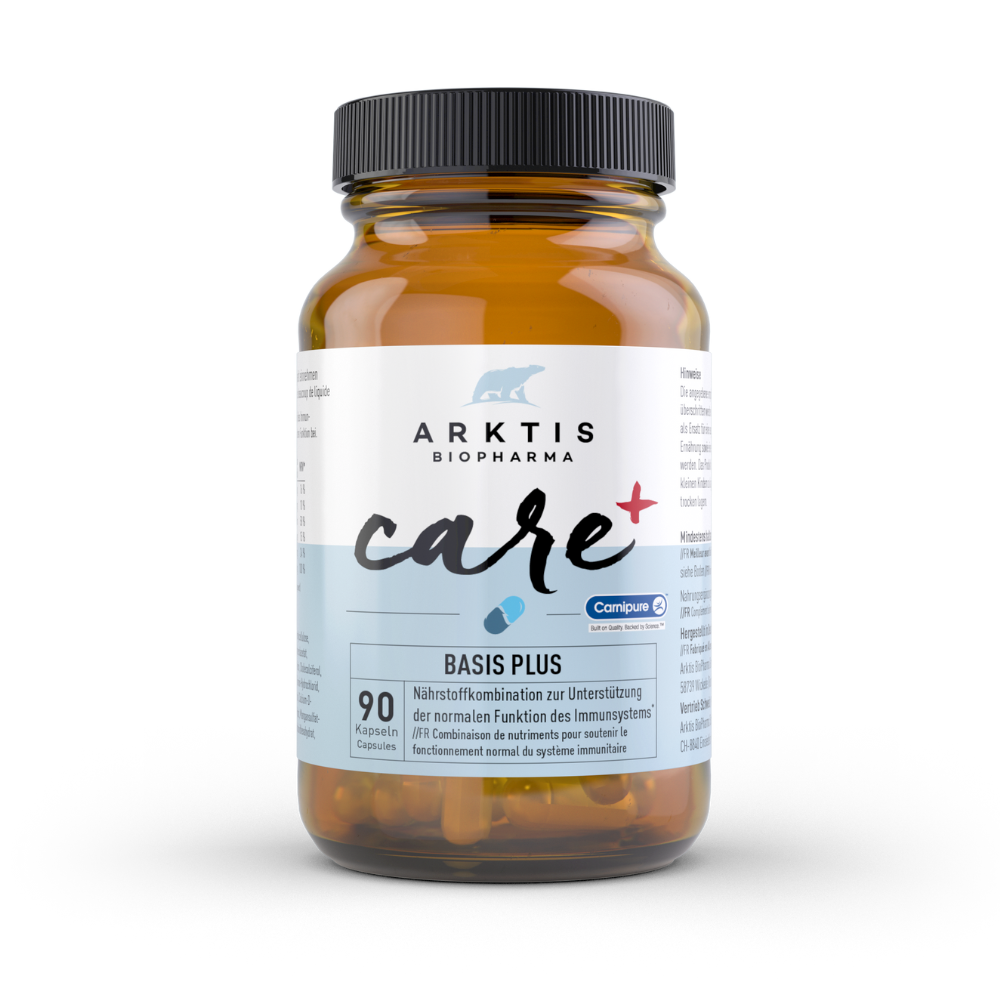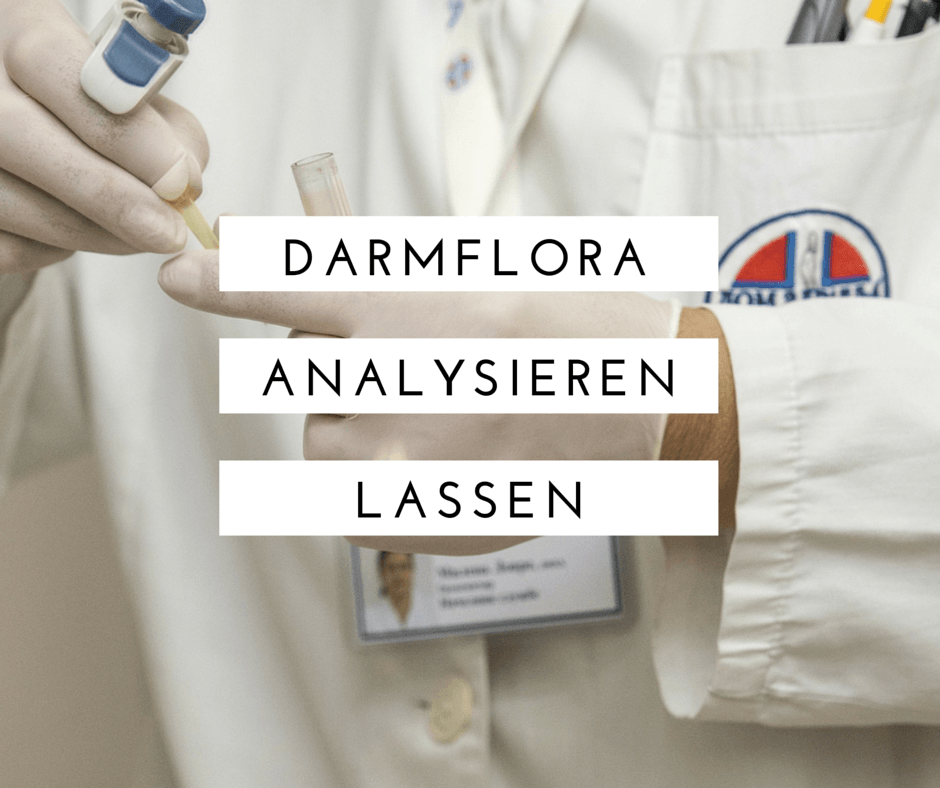
The topic of gut and gut flora is a "hot topic" at the moment, and yet many people don't know that you can have your gut flora analyzed quite easily.
The creatures inside us
Did you know that around 2 kilograms of bacteria live in your body? If you think about how much an intestinal bacterium weighs, you can work out roughly how many bacteria there are in 2 kg.
Well?
Exactly, about 100 trillion.
And these intestinal bacteria can be divided into "good" and "bad" - to put it very exaggeratedly. In other words, the bacteria (it is estimated that there are around 10,000 different species) have different tasks. But they all live "under one roof", namely inside us.
And wherever living beings live together, there are all kinds of situations. Friendships, enmities, cooperation, tolerance or disagreements. However, it is not only the behavior among each other that plays a role, but also the living conditions, climatic conditions or environmental pollution.
What happens when the intestinal flora gets out of balance?

Many people think they only have intestinal problems when they can't go to the toilet or when they have diarrhoea.
However, an imbalance in the intestinal flora not only affects digestion, but also the body's ability to produce hormones, for example. Or absorb nutrients. Or on the function of our immune system, inflammatory mechanisms and much more.
This is why a variety of symptoms should actually make you prick up your ears and lead you to pay attention to your gut health.
Symptoms of impaired intestinal flora
I will simply list the most important signs that should make you prick up your ears:
- Diarrhea, constipation, flatulence
- Irritability / mood swings
- Depression
- Dementia
- Thyroid problems
- Skin problems such as blemished skin, rashes, psoriasis or neurodermatitis
- Asthma
- Hay fever
- Autoimmune diseases such as celiac disease, Hashimoto's, Crohn's disease or multiple sclerosis
- ADHD
- Food intolerances
- Lactose or fructose intolerance
- Histamine intolerance
- Joint problems such as osteoarthritis, Arthritis
- Chronic pain
- Sleep problems
- Strong appetite for sweets
- Everything that has to do with mucous membranes (chronic sinus congestion or recurring cystitis)
- Overweight
As you can see, the gut plays a direct role in pretty much all diseases of civilization!
And according to doctors and scientists, diseases such as heart attacks and diabetes are also linked to the gut. So it is simply advisable to give this organ all the attention it deserves.
"Death is in the gut", as Hippocrates once said. And so is health.
So what should you do if you suspect that something is wrong with your gut?
The limitations of a colonoscopy
From the point of view of conventional medicine, you are probably familiar with colonoscopy or checking for blood in the stool and inflammatory markers in the stool. Recently, you can even swallow a video capsule to have your inner world recorded on video.
The advantages of a colonoscopy are that you can detect whether a serious illness such as Crohn's disease, ulcerative colitis or bowel cancer is present. Smaller things such as polyps can also be removed in the same operation.
The disadvantages are that it is an invasive procedure. It is usually performed under anesthesia, which is of course associated with a certain risk of anesthesia. In addition, other complications such as bleeding or the spread of bacteria can occur.
It is important to know that the lens of the device cannot see things such as the microbiology or changes in the intestinal environment, which is why people with intestinal complaints often receive a positive report after the colonoscopy (i.e. everything is fine), even though they do not feel well and know that something is wrong in their intestines. This is because a shift in the bacterial balance simply cannot be detected with a colonoscopy.
For me, the stool sample is therefore the method of choice when it comes to doing something for the gut at an early stage. Sure, it's not the nicest thing in the world to fill your own stool into tubes, but the results are unbeatable!
Analyze intestinal flora: Don't guess, measure
I consider analysis to be indispensable when it comes to helping people with intestinal complaints.
On the one hand, because it increases your willingness to really do something for your gut when you see that the current state is anything but optimal. Because the analysis shows this in black and white.
On the other hand, the analysis is also helpful when it comes to determining the intestinal cleansing products that you can take to get your intestinal situation back in order. It is important to know how to assess the quality of probiotics.
I work with one of the oldest, largest and most advanced laboratories for stool analysis and would like to show you what you can see from a simple stool sample.
My standard values, which I always have determined
Anaerobic and aerobic bacteria (microbiotic changes)
These provide information on whether your intestinal flora can successfully defend itself against harmful bacteria trying to colonize your intestinal mucosa. It also shows whether there are deficits in beneficial bacteria or whether there are indications of inflammation and also whether you tend to have diarrhea.
Fungi (Candida, mold)
The Candida fungus is always in our intestines, but it should not spread involuntarily. That would be a sign that it likes it too much and that would mean that the pH value in the gut is too alkaline.
It is quite comparable to nature.
We look for fungi in places where it is moist, warm and rather alkaline in terms of the soil.
If the fungi in your gut have multiplied too much, then it is important that this condition is reversed. This is because they can trigger symptoms such as migraines, diarrhoea, flatulence or even attacks of ravenous hunger or recurring yeast infections or bladder infections.
pH value
The pH value provides information via the so-called intestinal environment, which in turn is similar to that in nature. It requires an optimal acid-base balance in the digestive tract. The range of the optimum pH value is very narrow so that the inner ecosystem can function ideally.
From the stomach to the rectum, the pH value changes from approx. 3.0 - 6.5, so it is always in the acidic range!
Digestive residues (digestive disorder)
If there is too much sugar in the stool, this can indicate a digestive disorder of fructose or lactose. And too much fat in the stool can indicate nutritional errors or a difficulty in digesting fat. This information can also be used to adapt the diet to the respective circumstances.
Other parameters that I have determined depending on the situation are
Zonulin
This protein regulates the tight junctions, the "floodgates of the mucous membrane". Zonulin opens or closes the channels between the intestine and blood. This results in the selective transport of amino acids, sugars, fatty acids and immunoglobulins.
In the worst case, broken-down food proteins, bacterial endotoxins or Candida antigens can also pass through open tight junctions.
This is referred to as "leaky gut". This condition can trigger inflammation, food intolerances or even auto-immune diseases.
I like to compare zonulin to a customs officer who checks at the border who is allowed in and who is not.
Histamine
I always refer to histamine as an alarm that is elevated when something is wrong. It is an inflammation that can trigger many things, such as:
- food intolerance
- allergies in the airways or on the skin
- high and low blood pressure
- thyroid disorders
Histamine in the stool cannot be compared with histamine in the blood, but it is very easy to get under control again with a low-histamine diet.
If you would like to find out more about histamine intolerance, I have an interesting blog article for you.
Haptoglobin/haemoglobin
Haptoglobin is "old blood" and haemoglobin is "fresh blood". This test is used as a preliminary examination for bowel cancer. These values are not part of the standard examination, but if you want to do prevention, this would certainly be a good marker that you can also have determined.
Diversity
The variety of bacteria in the gut (diversity) can vary greatly from person to person. Antibiotic therapies, infections, increasing age, an unbalanced diet or smoking are all causes of decreasing diversity. This is at the expense of our health, or in other words, we lack the workers for certain tasks.
Stool analysis is still often ridiculed
Those who claim that stool analysis does not provide accurate results, is not scientific or only reflects what we have just eaten are wrong.
Because if this were the case, therapy would be much easier and less time-consuming. I would only have to eat differently for a few days and everything would be fine again.
But the fact is: it takes more than just a few days to rebalance the intestinal flora and therefore it also takes much longer to bring it back to its current state.
The stool analysis is therefore not a snapshot, but a reflection of the condition that has built up over months and years.
We are often told that diet plays no role in inflammatory bowel diseases such as Crohn's disease or conditions such as neurodermatitis or psoriasis. We have experienced the opposite in practice. And we prefer to believe what we see with our own eyes.
How does it work if I want to have my intestinal flora analyzed?
The procedure is very simple.
The first thing you need to do is find a therapist who can provide you with competent support and who is familiar with molecular genetic microbiome analysis. We can recommend our former colleague Milena Moritz, for example.
You will then receive a stool analysis kit with sample tubes and a so-called "stool catcher". You can fill the tubes with stool samples and send them to the laboratory in Switzerland, Germany or Austria (depending on where you live). The analysis takes about 2-3 weeks.
If everything is OK (which is very rarely the case), your therapist will certainly tell you something about your daily diet or carry out further tests, because your symptoms must come from somewhere. However, if there are measured values that are outside the norm, your therapist will suggest which products and, if necessary, dietary changes you can use to bring these values back into balance.
















